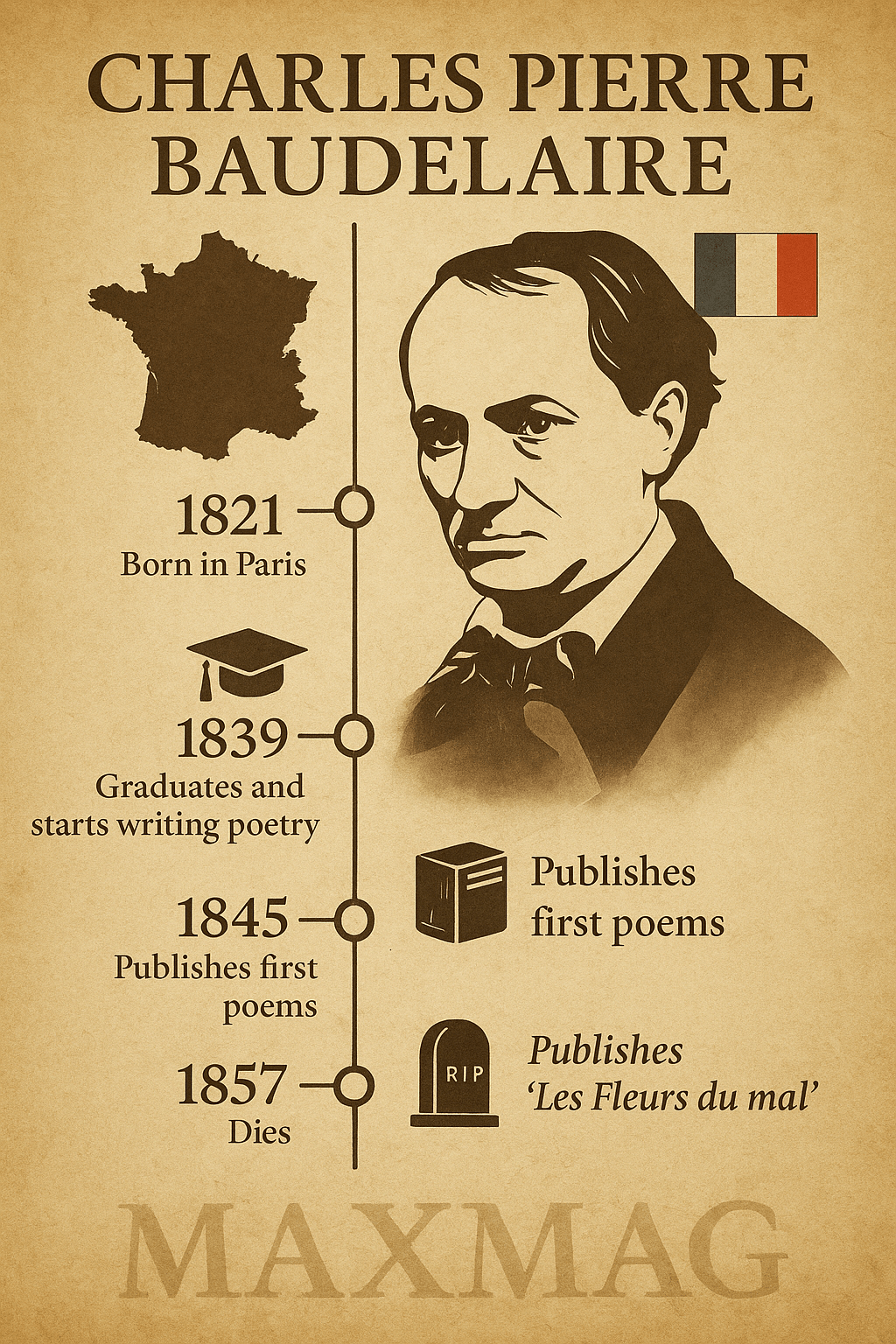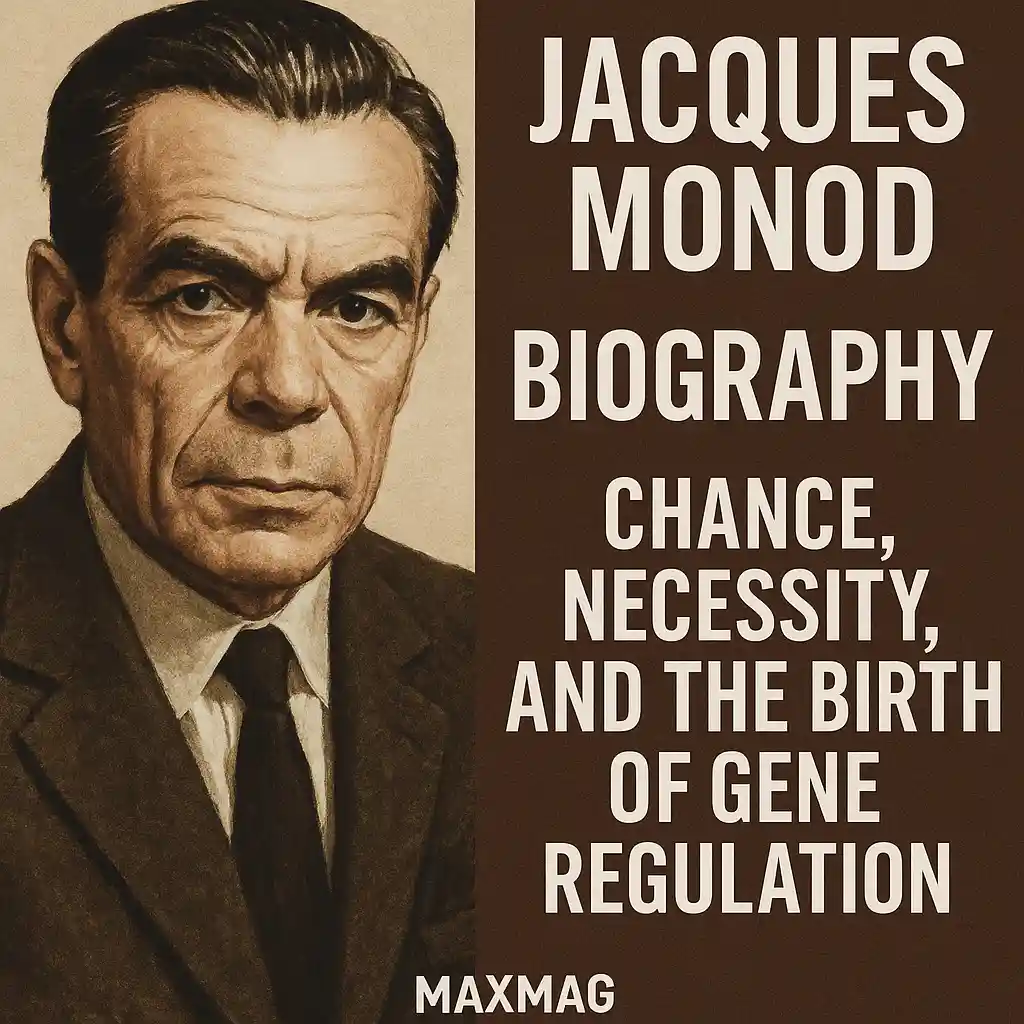
Charles Pierre Baudelaire, a name that resonates deeply in the world of literature and poetry, is best known for his profound exploration of beauty, the human condition, and the complexities of life. His most famous work, Les Fleurs du mal (The Flowers of Evil), delves into themes of decadence, sin, beauty, and the contradiction between pleasure and suffering. Baudelaire’s exploration of Charles Pierre Baudelaire beauty in darkness, both literal and metaphorical, challenges conventional views and presents a perspective where beauty thrives even in the most desolate spaces.
In this article, we will examine Baudelaire’s poetic vision, his exploration of beauty in darkness, and how his unique style has influenced generations of poets, artists, and thinkers.
Baudelaire’s Philosophy of Beauty: Light and Darkness
Baudelaire’s work redefined the notion of beauty. While traditional concepts of beauty often align with purity, light, and innocence, Baudelaire’s poetry presents beauty as something more complex—sometimes found in darkness, decay, and even despair. His belief that beauty is not confined to the pure and the perfect but can emerge from the corrupt and the sinful is central to his writing.
Baudelaire often drew from the contrasts between light and dark, seeing beauty not in a simple, idealized form, but in the interaction between these opposing forces. He believed that true beauty is found in the tension between the sacred and the profane, between innocence and experience. In Les Fleurs du mal, Baudelaire juxtaposes beauty with decay, pleasure with suffering, presenting a vision of the world that is far from ideal but full of hidden beauty for those willing to look deeper. You can read more about Baudelaire’s philosophy of beauty in this article from the Poetry Foundation.
Charles Pierre Baudelaire Beauty in Darkness: A Complex Vision
Baudelaire’s poetry does not shy away from the darkness inherent in human existence. He explored themes of decadence, where Charles Pierre Baudelaire beauty is interwoven with decay and corruption. This idea of finding beauty in darkness is not about glorifying suffering, but about embracing it as an essential part of life’s complexity. Baudelaire’s use of symbolism, particularly his vivid imagery of flowers, decay, and the urban landscape, captures the duality of beauty in a world full of contradictions.
The poet does not merely write about beauty in a conventional sense; he seeks it in the uncomfortable, the forbidden, and the morally ambiguous. Baudelaire finds Charles Pierre Baudelaire beauty in the experience of the modern world, the hustle of city life, and the pleasures and vices that come with it. His work reflects the tension between desire and guilt, pleasure and pain. The darkness in Baudelaire’s poetry is not something to be feared, but a space where beauty blooms unexpectedly, if one is open to it. For a deeper dive into Baudelaire’s use of symbolism, check out this overview from the Britannica.
The Influence of Baudelaire on Modern Literature and Art
Baudelaire’s influence extends far beyond literature into the world of visual art, music, and philosophy. His exploration of Charles Pierre Baudelaire beauty in the urban landscape and in human experience inspired many artists, including the Symbolist painters who sought to evoke moods and emotions rather than depict reality directly. Baudelaire’s vision of beauty in the modern world, with its inherent contradictions, played a key role in the development of modern art and literature.
Through his detailed and symbolic descriptions of the city, Baudelaire captured the complexities of modern life—its pleasures, its vices, and its isolation. His poetry influenced countless poets, including the likes of T.S. Eliot and Arthur Rimbaud, who found in Baudelaire’s themes a rich vein of artistic expression. Baudelaire’s writing, particularly his ability to capture the raw beauty of the human experience, continues to be a source of inspiration for writers and artists to this day. To learn more about Baudelaire’s lasting influence, you can read this article from the Library of Congress.

Baudelaire and the Search for Beauty in Modernity
One of Baudelaire’s central themes is the search for Charles Pierre Baudelaire beauty in the modern world. In the rapidly changing landscape of 19th-century Paris, Baudelaire saw a world that was both exhilarating and alienating. He explored how beauty could be found in the noise of the city, in the lives of its inhabitants, and even in the fleeting moments of joy or sorrow that mark everyday existence. His work shows that beauty is not confined to nature or tradition, but is embedded in the modern, often chaotic, world.
Baudelaire’s search for beauty was not about looking back to an idealized past, but about finding it in the present, with all its flaws. His poem Le Spleen de Paris (The Spleen of Paris) reflects this sentiment, showing how beauty and melancholy coexist in the urban environment. His work remains a vital exploration of the human condition in an age of industrialization, urbanization, and cultural change. Learn more about Baudelaire’s influence on modern culture through this article from The New York Times.
Beauty in the Struggle Between Pleasure and Pain
Baudelaire’s exploration of Charles Pierre Baudelaire beauty is often intertwined with themes of pain, loss, and contradiction. For him, beauty cannot exist without its counterpart—suffering. In Les Fleurs du mal, Baudelaire reflects on how pleasure and pain, beauty and suffering, are inseparable. The darker aspects of life—pain, longing, and desire—are essential to understanding beauty in its fullest sense. His work reveals that beauty is not always comfortable or straightforward but often arises in the tension between opposing forces.
The poet’s use of sensual language and imagery brings out the eroticism and indulgence of the world, while also exposing its darker undercurrents. Baudelaire’s work challenges readers to look beyond the surface and see the complexity of Charles Pierre Baudelaire beauty in all its forms, even in the most difficult and painful moments. Explore Baudelaire’s thematic exploration of beauty in this analysis from JSTOR.
Baudelaire’s Legacy: A Timeless Exploration of Beauty
Baudelaire’s exploration of Charles Pierre Baudelaire beauty in darkness continues to be a powerful influence in literature and art. His ability to find beauty in the complexities and contradictions of modern life resonates with contemporary audiences who face similar tensions. His legacy is one of courage, intellectual curiosity, and artistic brilliance, as he dared to delve into the darker aspects of life and find beauty within them.
Baudelaire’s works, especially Les Fleurs du mal, remain a testament to his understanding of beauty as a complex and multifaceted concept. His exploration of the interplay between light and darkness continues to inspire artists and writers who seek to portray the richness of human experience. For more about Baudelaire’s lasting impact, check out this piece from The Poetry Foundation.
FAQ
Q1: What is Baudelaire’s philosophy of beauty?
A1: Baudelaire believed that beauty is not confined to the ideal, pure, or light. He saw beauty in the complexities and contradictions of life, often finding it in darkness, decadence, and suffering.
Q2: How does Baudelaire portray beauty in the modern world?
A2: Baudelaire finds beauty in the chaotic, often dark aspects of modern life—urban landscapes, the pleasures and vices of city dwellers, and the tension between pleasure and pain.
Q3: How did Baudelaire influence modern literature and art?
A3: Baudelaire’s themes of beauty in darkness and his exploration of modernity had a profound impact on Symbolist artists and poets. His work inspired many modernist writers, including T.S. Eliot and Arthur Rimbaud.
Q4: What role does suffering play in Baudelaire’s idea of beauty?
A4: Baudelaire believed that suffering, pain, and longing are essential to experiencing true beauty. His work reflects the idea that beauty is often found in the struggle between pleasure and pain.
Q5: What makes Baudelaire’s work timeless?
A5: Baudelaire’s exploration of beauty in darkness, his attention to the complexities of the human experience, and his ability to capture the contradictions of modern life make his work relevant to readers across generations.




